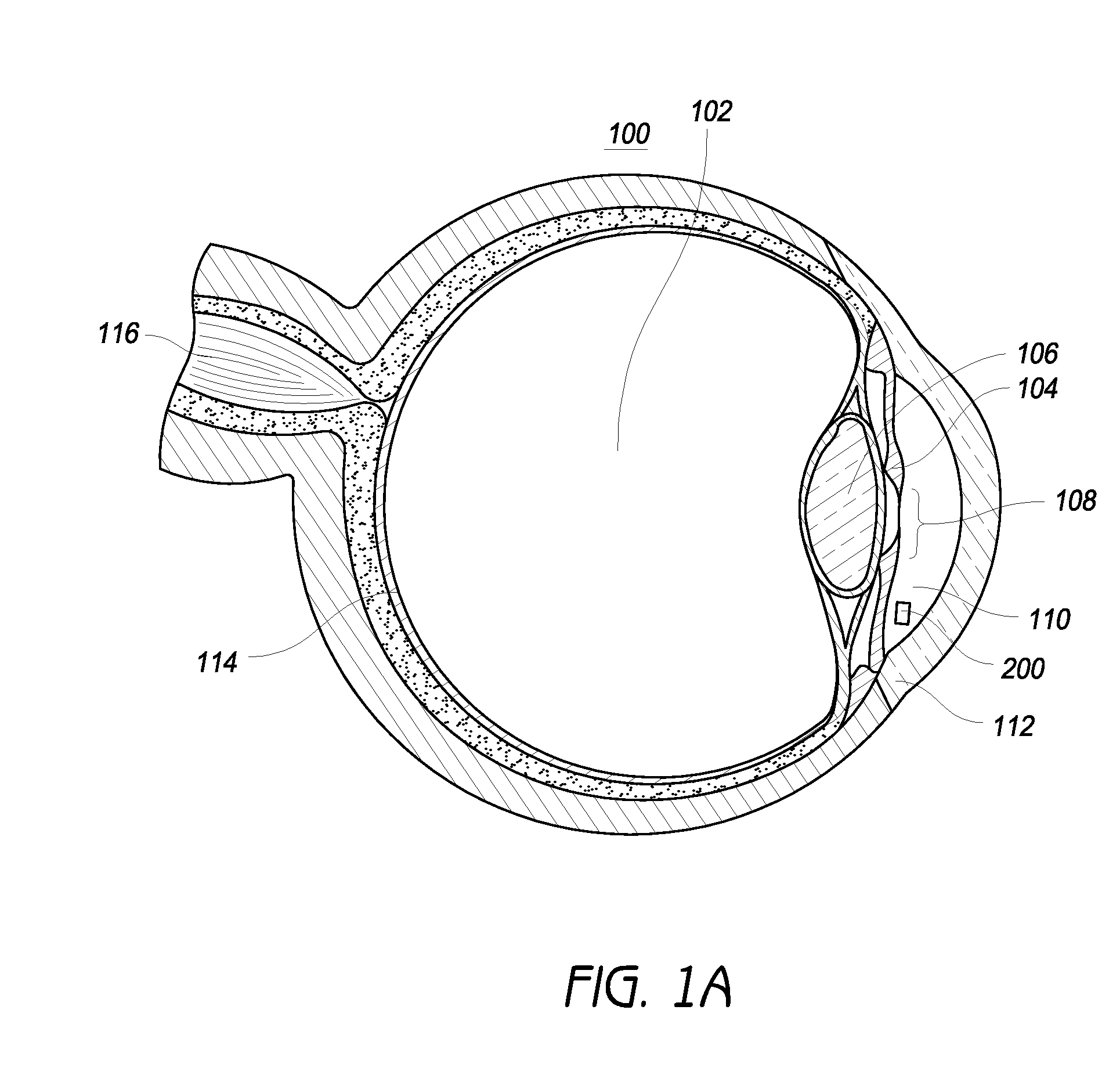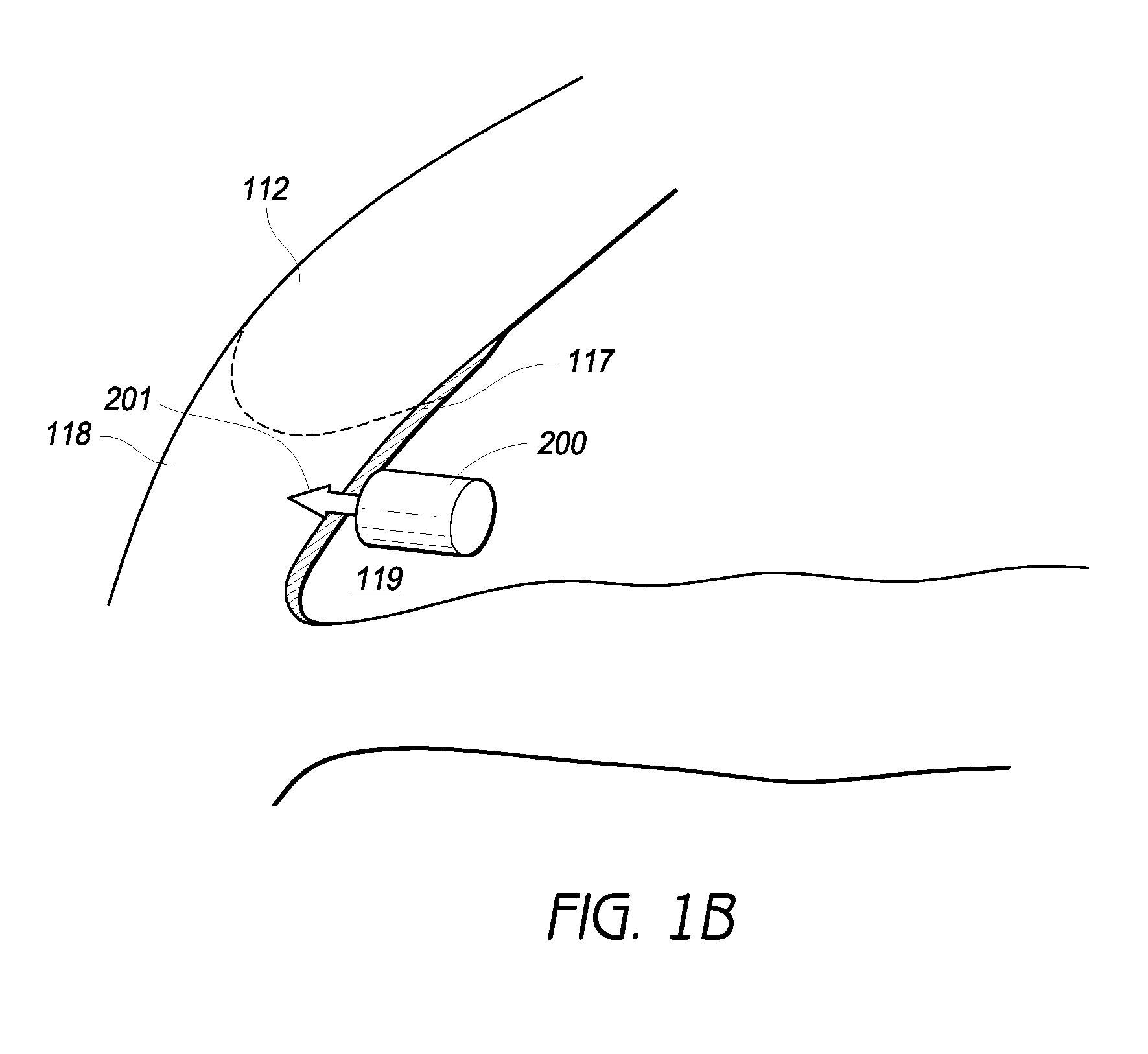Intraocular physiological sensor
a physiological sensor and intraocular technology, applied in the field of implantable physiological sensors, can solve problems such as vision loss compl
- Summary
- Abstract
- Description
- Claims
- Application Information
AI Technical Summary
Benefits of technology
Problems solved by technology
Method used
Image
Examples
Embodiment Construction
[0033]There is a need to effectively monitor intraocular pressure within a patient's eye in order to detect, or monitor the progression of, glaucoma. Intraocular pressure can be measured non-invasively using, for example, a tonometer. While tonometers have the advantage of being non-invasive, they have the disadvantages of generally being expensive, non-portable, specialized equipment that requires skilled operation. Accordingly, as a practical matter, it is difficult to use a tonometer to effectively monitor intraocular pressure in a patient's eye with time resolution greater than one measurement every few days or weeks. However, since intraocular pressure can vary significantly over relatively short periods of time, such relatively sparse intraocular pressure measurements may not provide a complete or accurate picture of the patient's risk for glaucoma. It would, therefore, be advantageous to be able to measure intraocular pressure more often or even continuously.
[0034]FIG. 1A is ...
PUM
 Login to View More
Login to View More Abstract
Description
Claims
Application Information
 Login to View More
Login to View More - R&D
- Intellectual Property
- Life Sciences
- Materials
- Tech Scout
- Unparalleled Data Quality
- Higher Quality Content
- 60% Fewer Hallucinations
Browse by: Latest US Patents, China's latest patents, Technical Efficacy Thesaurus, Application Domain, Technology Topic, Popular Technical Reports.
© 2025 PatSnap. All rights reserved.Legal|Privacy policy|Modern Slavery Act Transparency Statement|Sitemap|About US| Contact US: help@patsnap.com



